Thermoregulation & Hydration
1/32
There's no tags or description
Looks like no tags are added yet.
Name | Mastery | Learn | Test | Matching | Spaced |
|---|
No study sessions yet.
33 Terms
Kangaroo Mouse intro
-lives in the desert
-has the same physiology as us, but does not drink water
-it only gets it’s water from metabolism
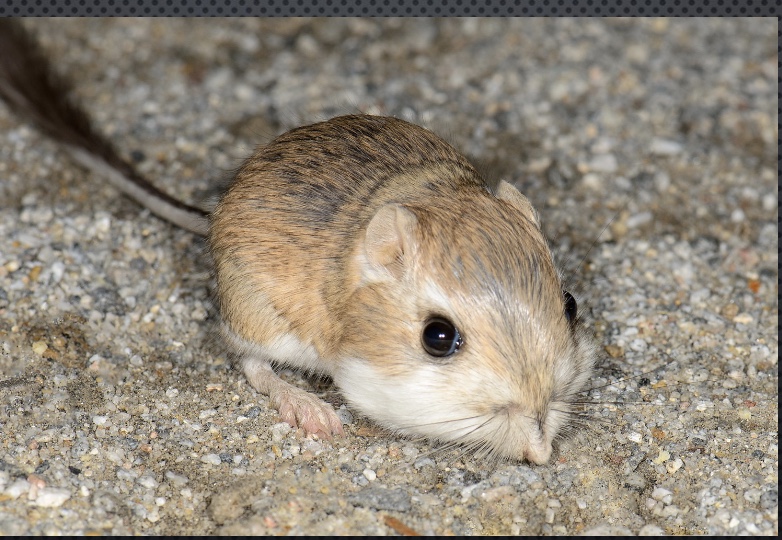
Triathlete collapsing video: what’s the issue?
-Dehydration
So hot turned off ability to release heat
Competition for blood between skin (to dissipate heat) and muscle (for performance); low blood=bigger competition
he skipped some aid stations
-Heat stroke
push to point allow muscles to win
cook brain so lose consciousness
-Depleted glycogen?
but didn’t lose mental acuity w/ thks
*produced a lot of heat (fastest metabolism of racers), did not rehydrate, and had low glycogen
*Interview: did not do heat training, thus was not heat adapted; genetically prone to heat injury? (ex: lower number of sweat glands)
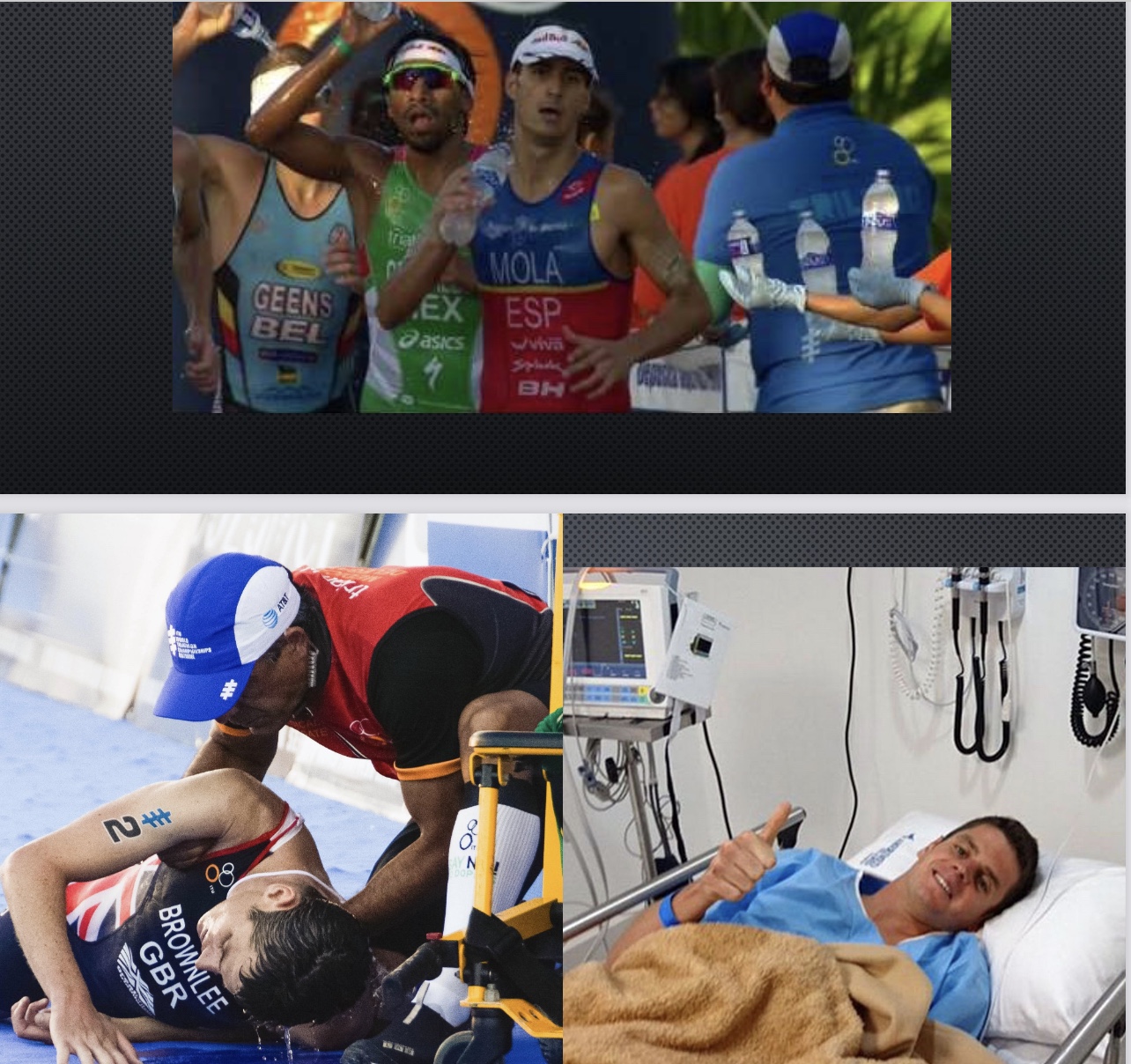
thought question: do lots of people walk around dehydrated?
-signals: headaches? sluggish? concentrated urine?
*how would we know?…
How would you know someone is dehydrated? (what would you measure or look for?)
-Thirst
1st thing you should look for
bell-shaped curve among people
-Body weight loss
temp dif=fluid loss
-Low volume of dark (concentrated) urine
-Elevated resting HR
lower blood volume=higher HR to maintain BP
BP= Q x TPR; Q=HR x SV → higher HR to compensate for lower SV
-Postural hypotension
stand up and get a head rush
more likely if low BP to begin with
-Elevated blood osmolality
lot of solutes in blood/high osmolality=need fluids
consequences of dehydration
-Low BP could cause syncope (blackout)
temporary, but not a big deal
worried if person hits their head, if old could break a hip
-Kidney stones
concentrated urine solids precipitate out
-Impaired athletic performance due to inadequate blood flow and thermoregulation
tradeoffs
daily water balance
*match up dehydrated vs hydrated state
Sources In
-Beverages: most
-Food
-Metabolism: water you make with O2 at end of ETC and H’s from food; soda cans worth a day
Sources Out
-Urine: most
-skin/sweat: variable; includes everyday “insensible perspiration”, but higher if exercise
-Lungs: “I can see my breath”; zero if completely humid air
-Feces: lower if constipiated, higher if diarrhea
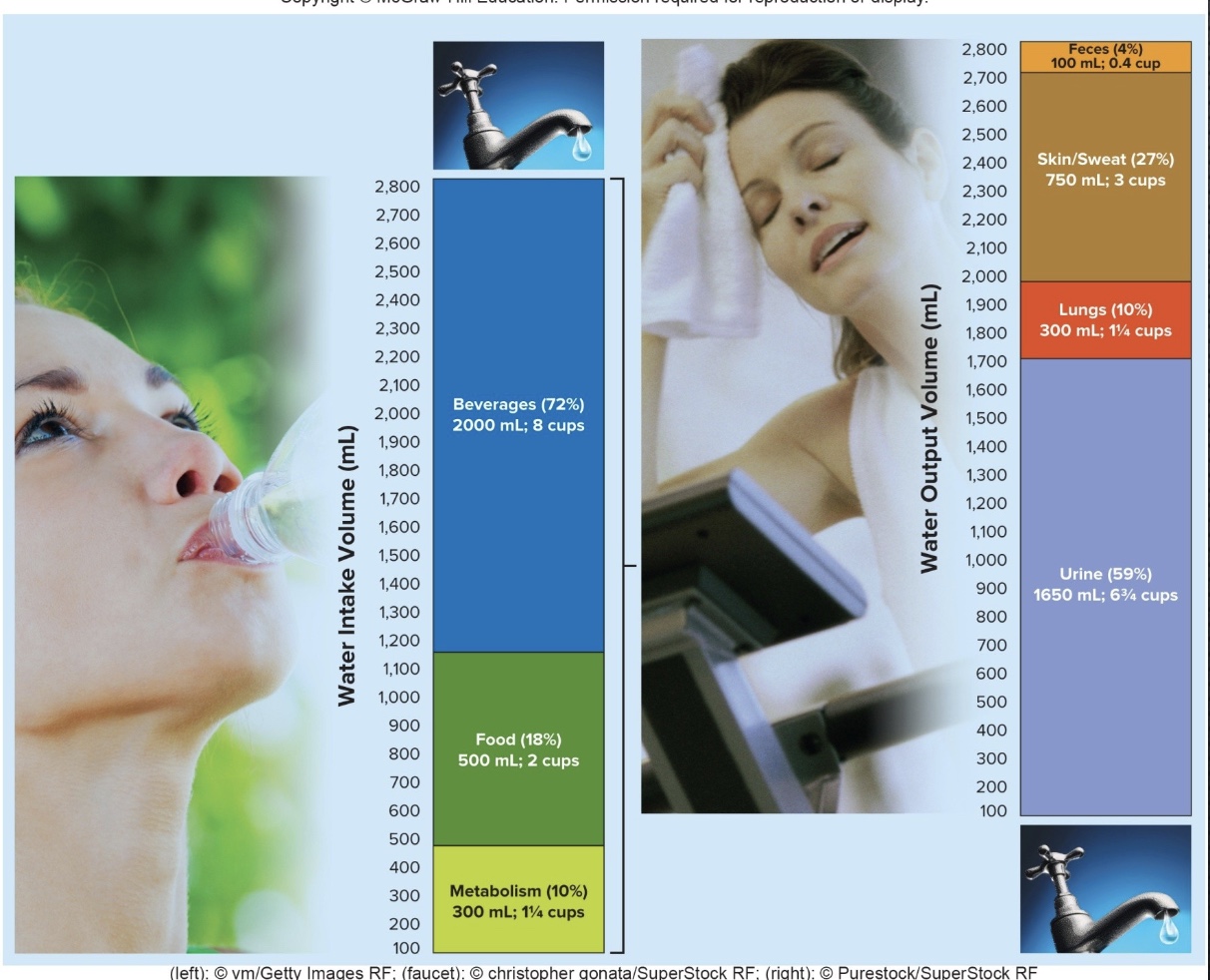
3 general places for fluid in the body
-intracellular water (ex: inside cells)
-intercellular water (ex: interstitial space)
-intravascular water (ex: blood stream)
*exceptions: CSF, eyes
*all goes in blood to start, then distributed if hydrated; bc of kidneys want water throughout the day (otherwise need IV so into blood)
*kidney/urine biggest regulator of output

Body fluid compartments + amounts
-Water is added and removed from this system
-Water flows between compartments to dilute “stuff” (e.g. electrolytes like Na+)
Compartments
-2/3 inside cells (intracellular fluids)
-1/3 outside cells
Interstitial fluid: most outside
Intravascular fluid

Total body mass females vs males
-Males more fluids than females
-Body composition impacts total fluid content; fat has less water, lean tissue is more watery
-water is added to (via the GI or IV) or removed from (via kidneys) the blood
*also shows 2/3 intracellular, 1/3 extracellular (w/ 80% interstitial fluid and only 20% plasma)
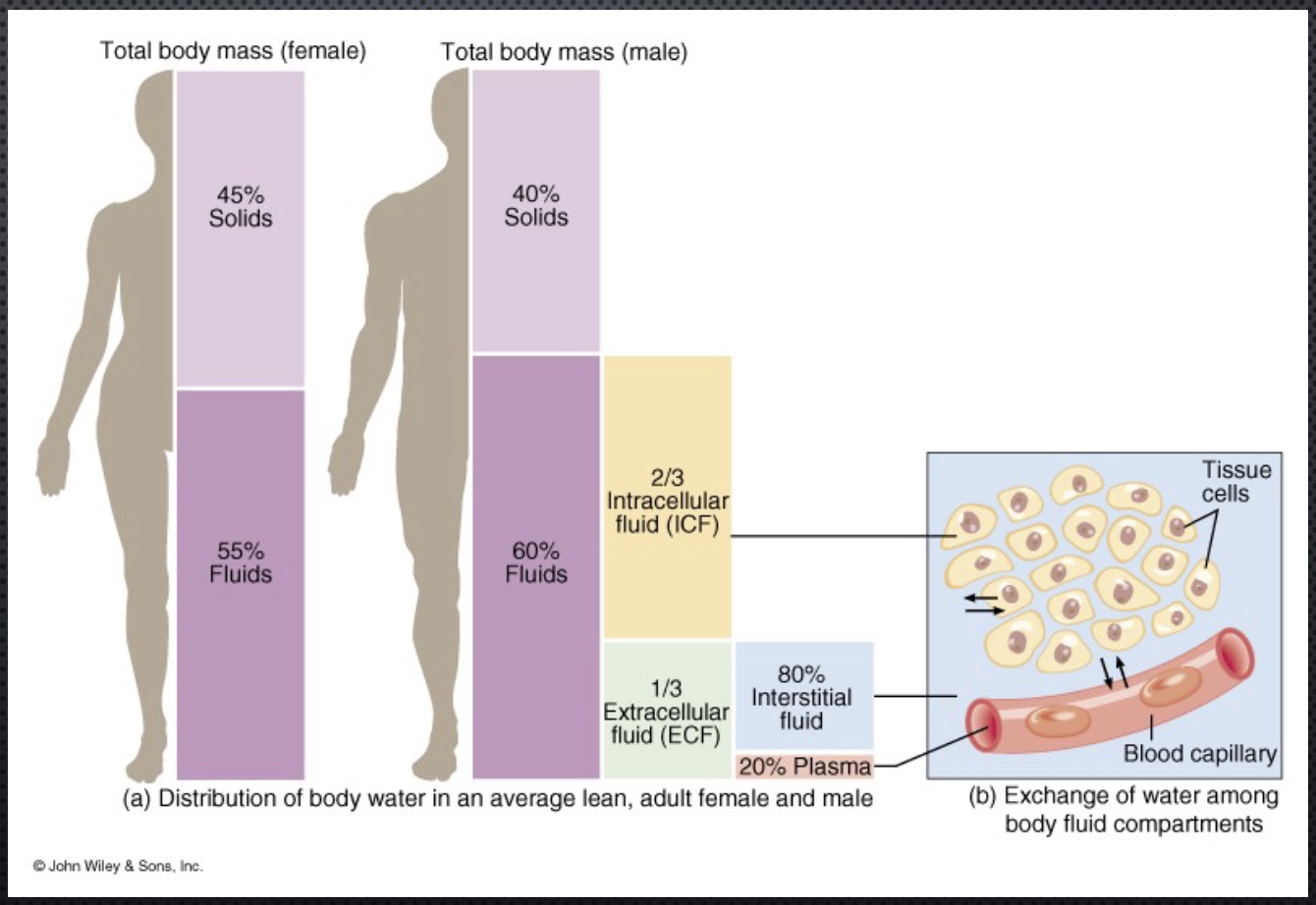
hyperhydration vs euhydration vs hypohydration
-Hyperhydration=overhydration
-Euhydration=normohydration
-Hypohydration=dehydration)
osmolarity (or osmolality)
-concentration of “stuff” in solution
-body= ~300 mOsm/kg
-sweat= ~100 mOsm/kg (*thus less particles in sweat than inside us)
*per kg of fluid
control of hydration status via hypothalamic osmoreceptors
-When osmolality goes up (too concentrated/less fluid and more particles), hypothalamus directs the pituitary to secrete antidiuretic hormone (ADH), which preserves water in the kidneys making urine more concentrated (*so preserve fluid)
-They also stimulate thirst and thus drinking behavior. (*bell-shape curve)
*2 levers
*input=thirst; output=urine
hemotherm
-warm blooded
-stay warm in a narrow range
range of normal TC (core temp)
97-100F (~37C)
-=core temperature
Core vs shell (skin) temperature
-Core: measure by swallowing temp probe
-Shell/skin: widely varies; lower than core
*how feel=relative to where your brain wants to keep you at
Heat Balance equation
Heat Gain
-Metabolic heat: most energy burn (NOT external work; always going; up w/ exercise)
-Environmental heat: conduction (ex: touch hot stove), convection (ex: hot shower, hot drink), radiation; not much
Heat Loss
-Radiation: most important; things not in contact w/ each other; if warmer than room temp radiate heat (otherwise almost everything in the room is the same temp, and net radiate heat away)
-Conduction: solid warms up solid; ex: butt in chair
-Convection: liquid and solid in contact and heat transferred; ex: cold shower, windy outside
-Evaporation: last resort; fluid on skin can evaporate
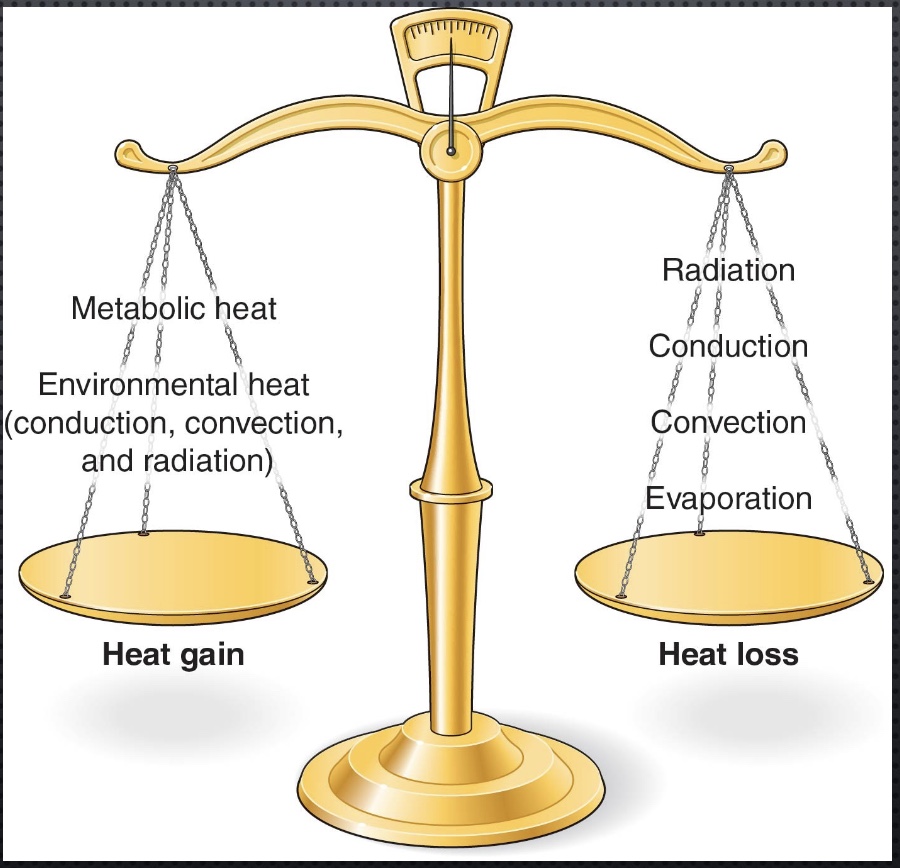
Radiation
-ex: radiator radiates heat in room; inferred/heat sensing cameras
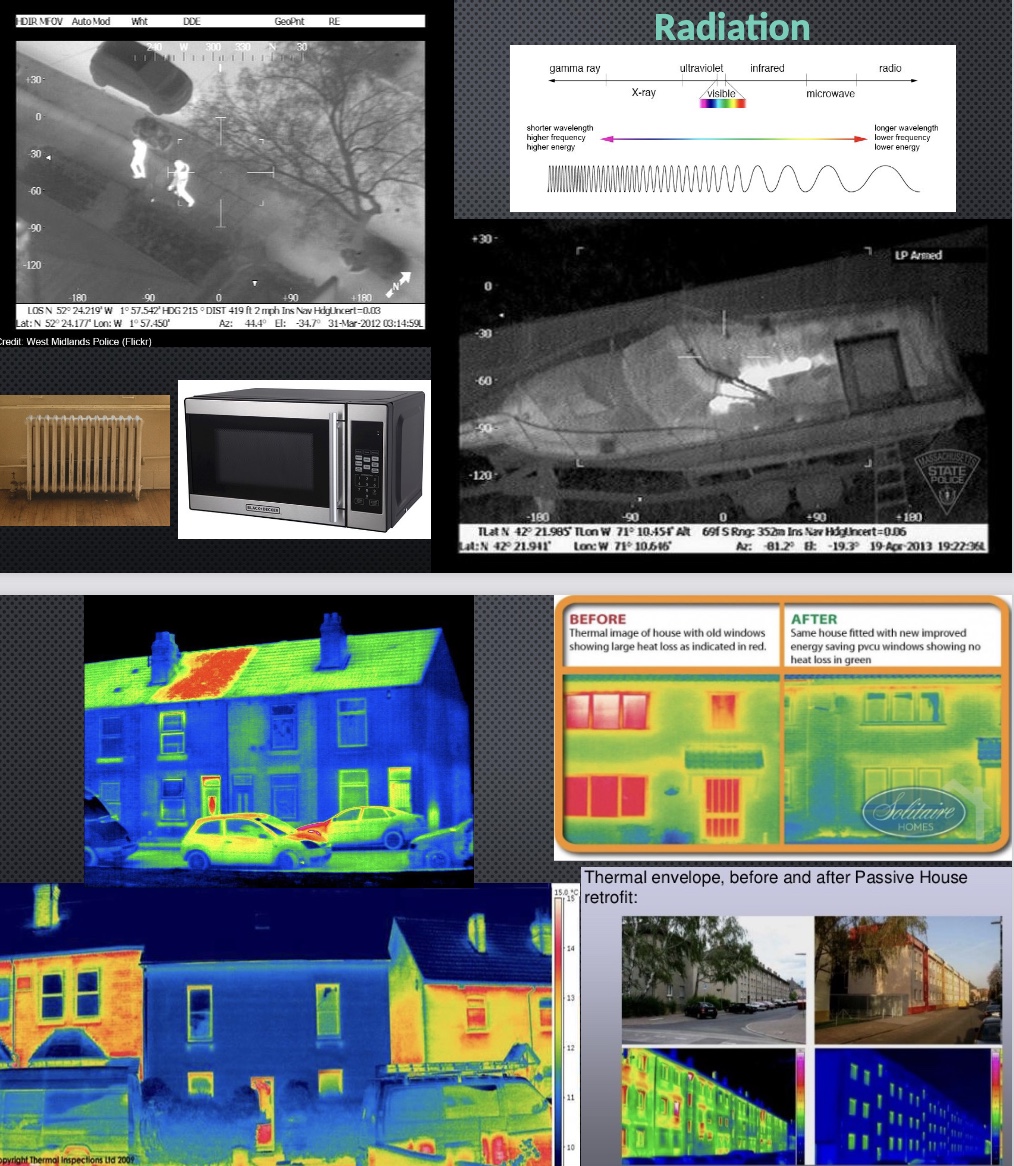
Conduction
-not a powerful way of heat transfer
-towel and tile same temp (even though don’t feel like it), but the solid tile is a better conductor so grabs heat from skin faster than the rug
-no temp sensors outside body, only in skin (so don’t feel cold, only feel heat leaving skin)
*Styrofoam=bad conductor, glass=good conductor)
*when baking cookies: don’t need glove entering bc pan at room temp, but need glove exiting bc blocks conduction from hot pan

Convection
-hot air raises
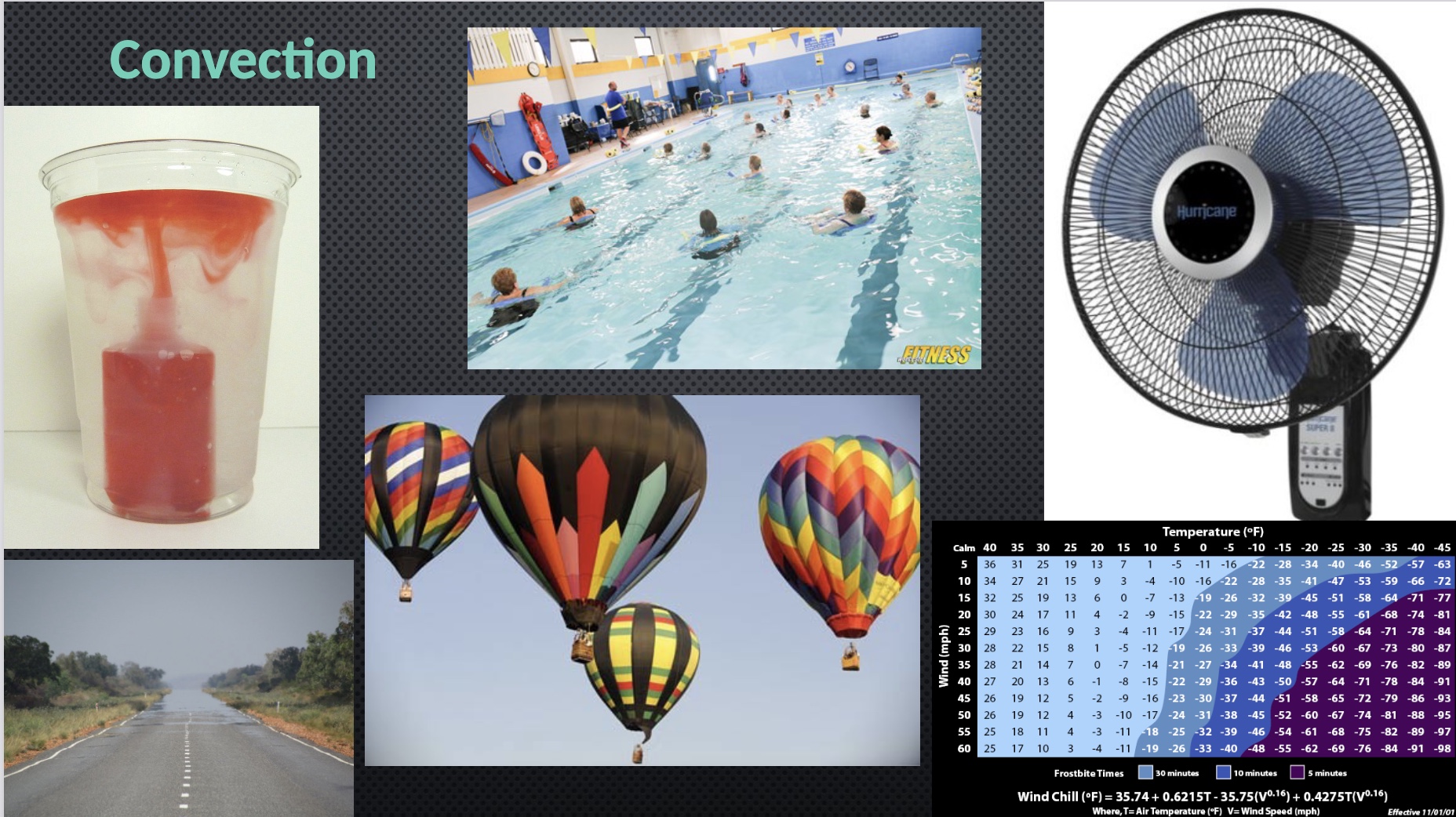
maximal sweat rates + how would measure
-maximal sweat rates=2-4L/hr
how measure: hot and humid envionrment, no airflow, exercise, look at weight loss; want to maximize heat gain)
everybody has a dif range
-1L=1kg; 1L=580kcal/hr
-Salt=3g/L sweat
2.3g/day recommendation, thus easy to sweat it all out
-humidity hinders evaporation
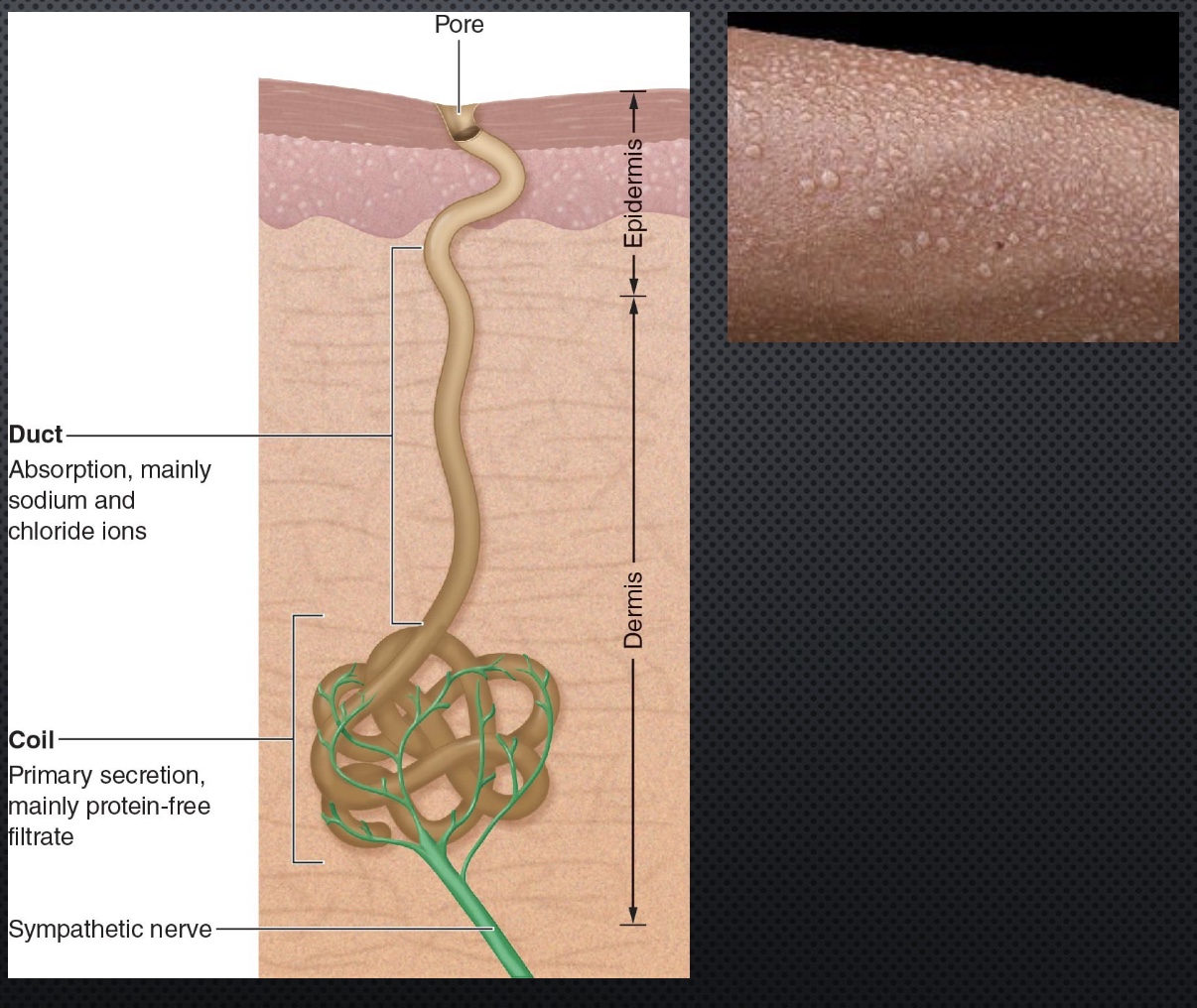
Thermoneutral zone
-temperature regulation happens ONLY with vasomotor control
just use blood vessels; blood away or towards skin
=temp room your’e in
Temperature negative feedback control
*hypothalamus
Blood warmer
-Vasodialate (ideal)
-Sweat (want only if exercise)
Blood cooler
-Vasoconstrict (ideal)
-Shiver
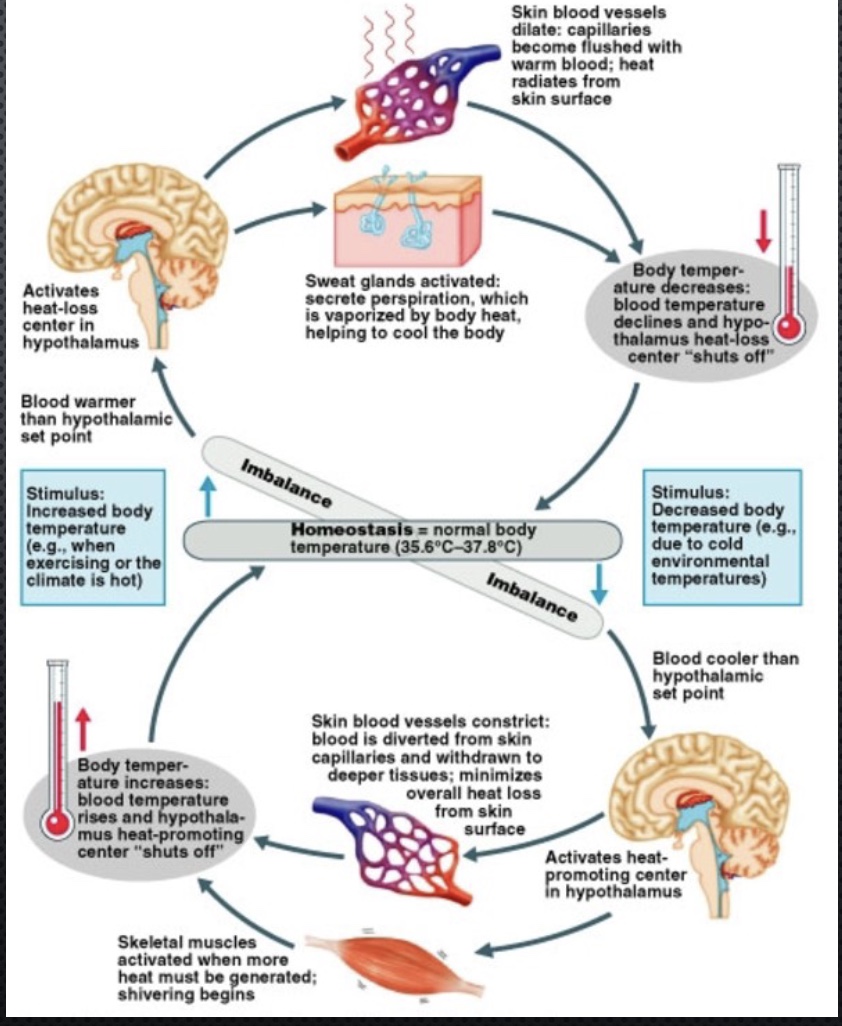
Energy accounting graph (normal and humid envionrment)
In a normal envionrment during progressive exericse…
-Energy output: not all to exercise….
*energy for work; resting=60kcal/hr
-Heat production: most energy/80% lost to heat
*how much heat loss; example of a higher TC/normal response
-Total heat loss: don’t loss all
*next 3=dif heat loss ways
-Evaporative heat loss: most effective; sweating
-Radiative and Evaporative heat lost: don’t change much
If Humid
-red and orange same
-green and teal down
*Tc goes up
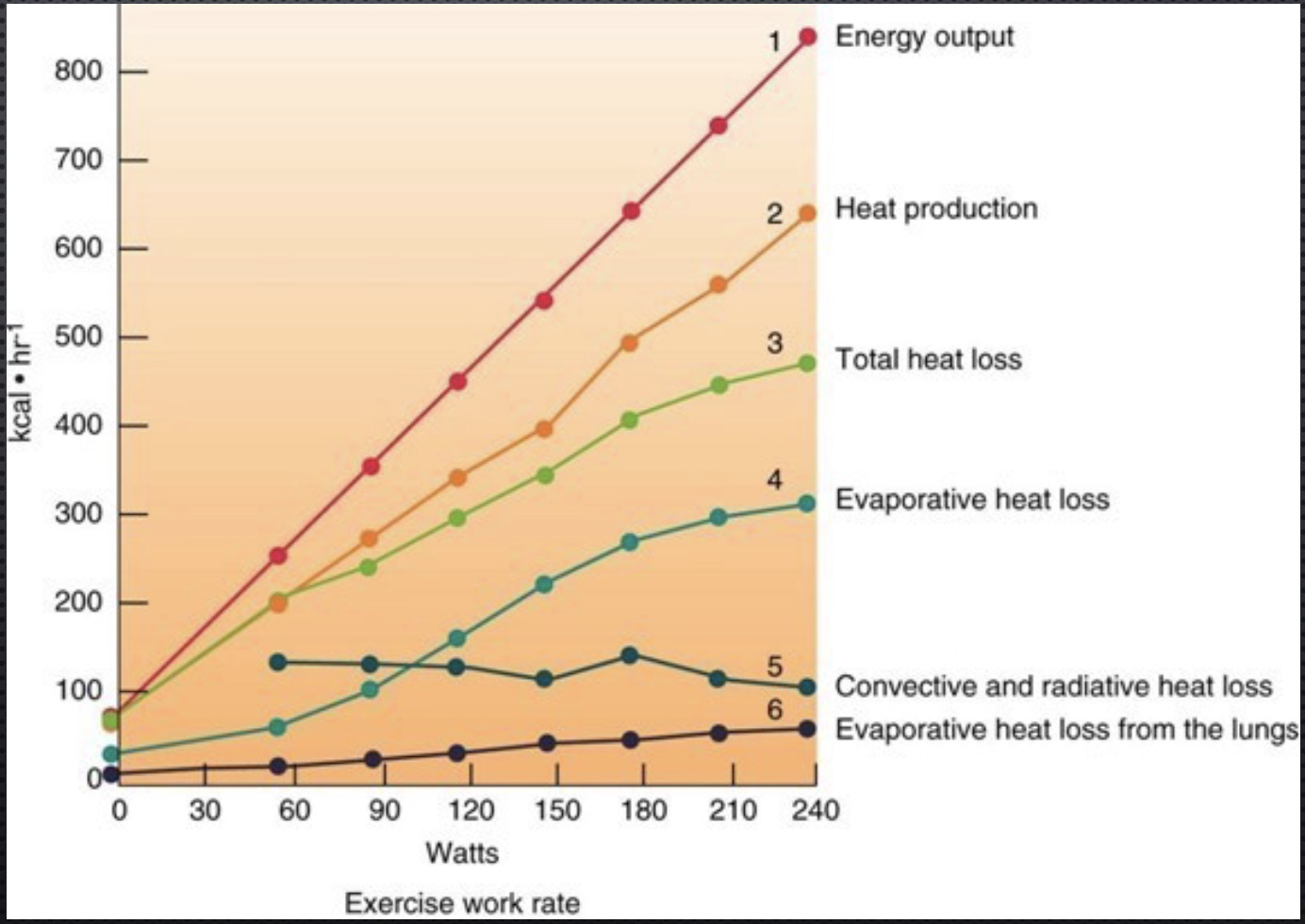
relative humidity feels like bar graph
-if humid, more difficult to get rid of heat, so feel hotter
*can’t rely on evaporation as much
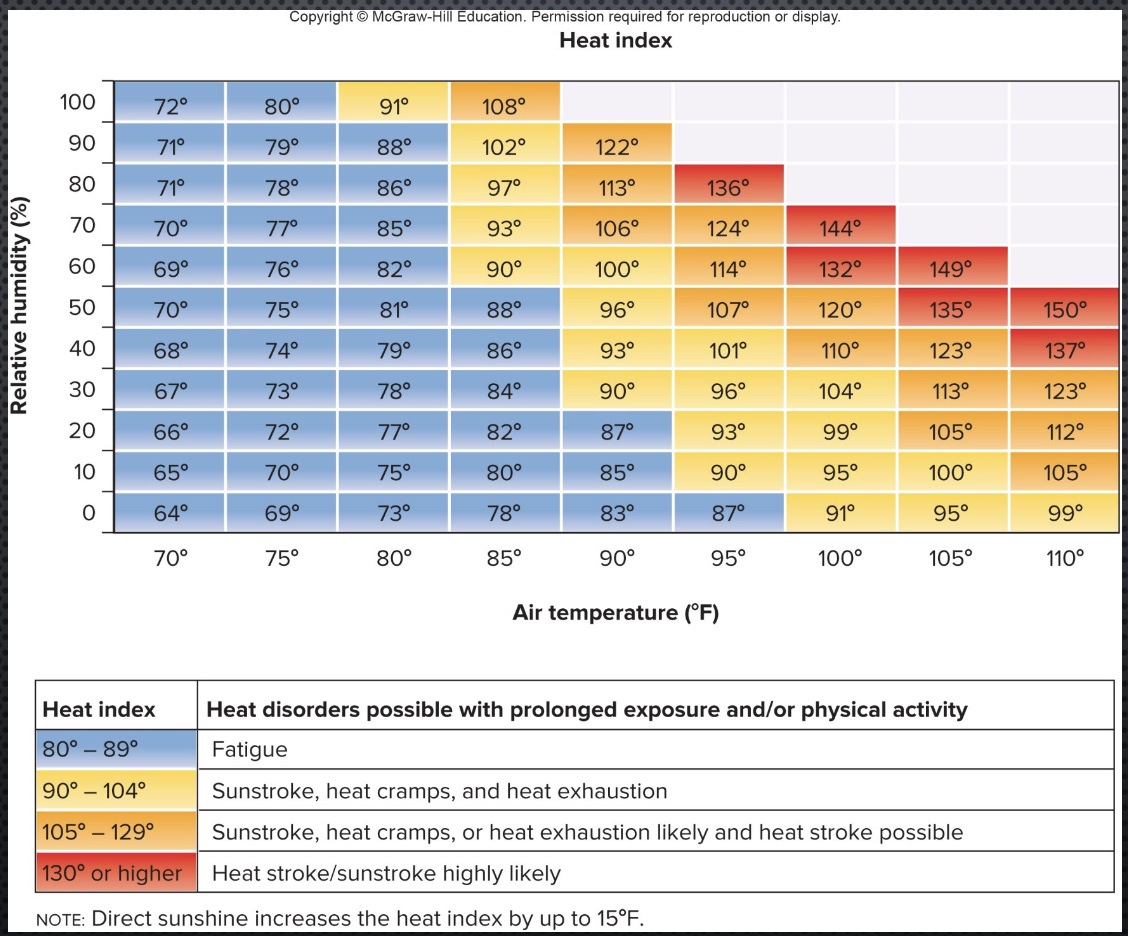
Exercise RT vs Hot environment: Rectal temp
-TC up both, but higher in hot
*no radiation heat lost
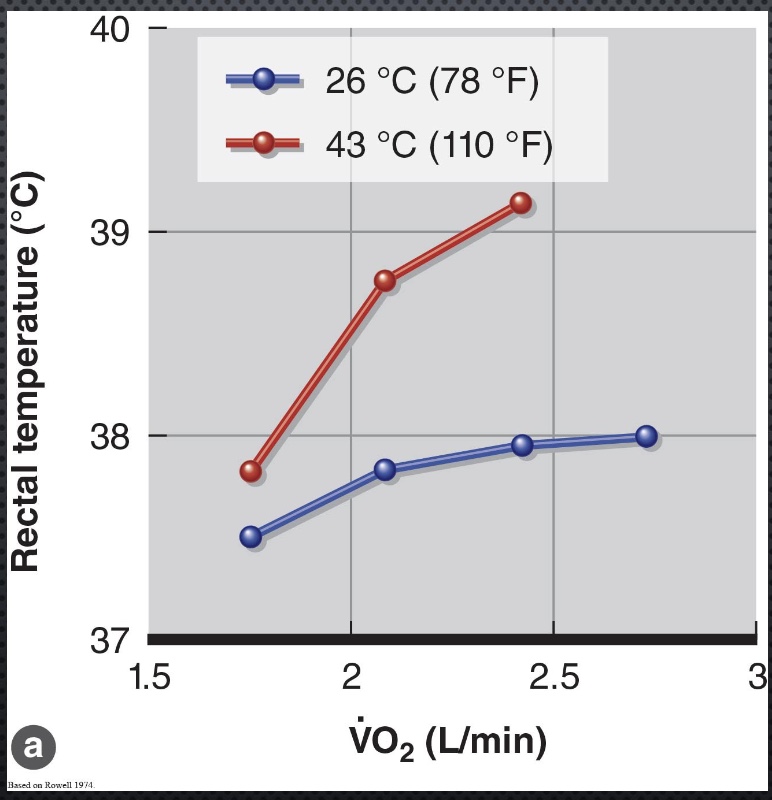
Exercise RT vs Hot environment: SV & HR
SV
-RT maintained
-Hot: SV lower (bc more blood in skin/less in blood bc dehydrated)
HR
-both up, but higher in hot (so get same Q to a limit…)
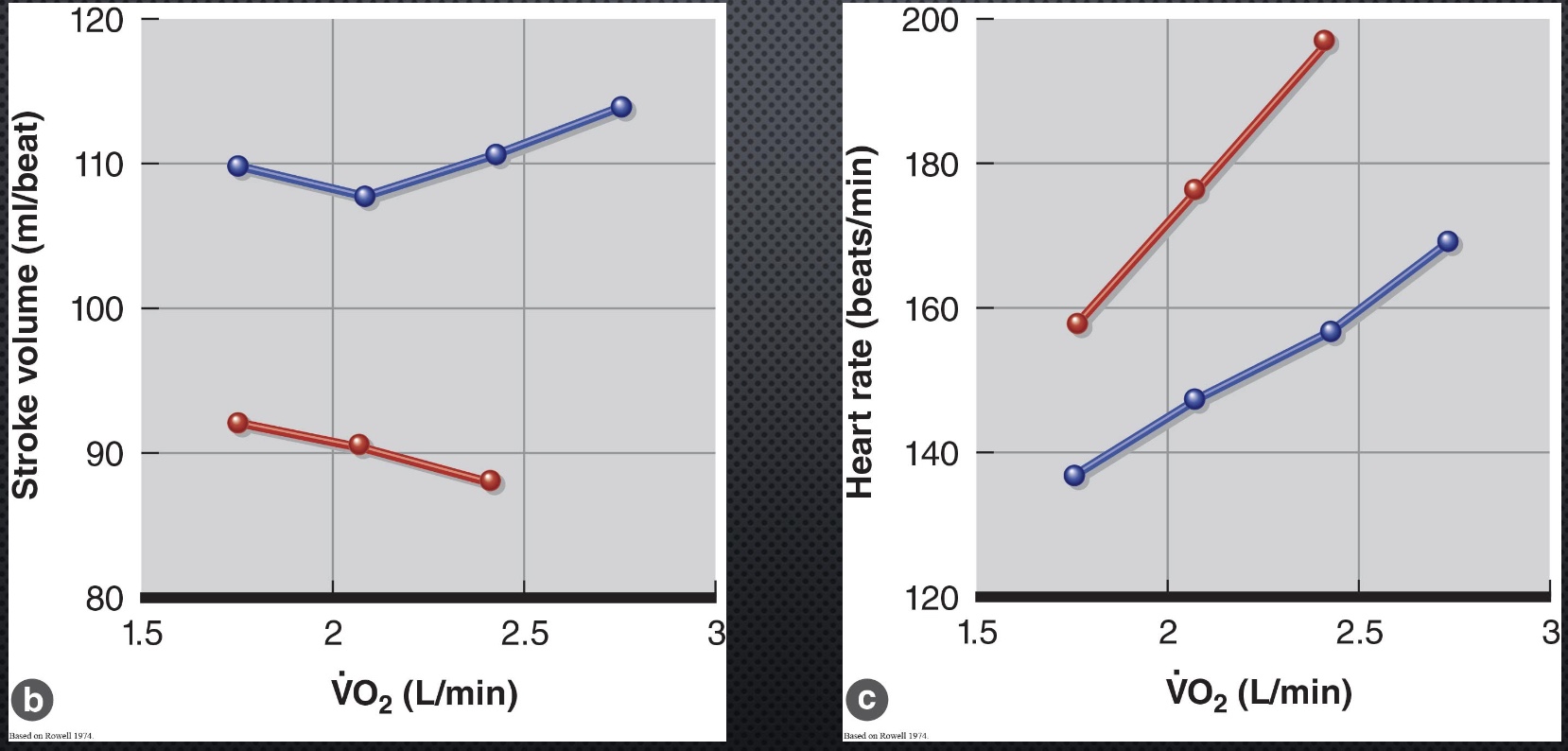
Exercise RT vs Hot environment: Q
-Q roughly same for some time
-but HR has a limit: can’t keep compensating for SV at high intensities and hot envionrment
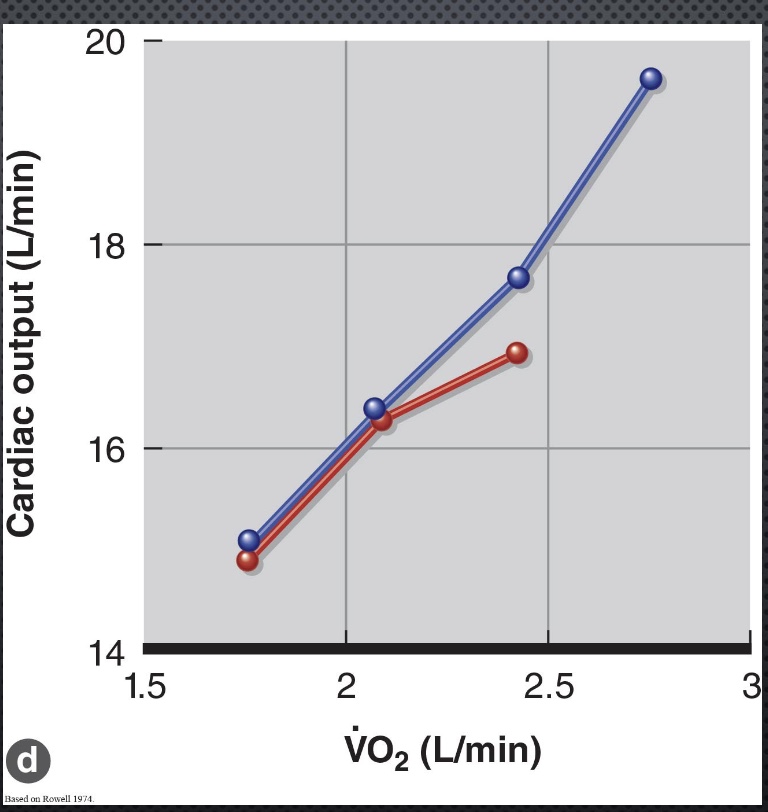
Consequence of dehydration
-higher competition for blood between the active muscles (VO2, for work) and the skin (to dissipate heat)
*if muscles win=heat injury
-performance impairment starts at ~2% body weight loss
-consequences are a continuum
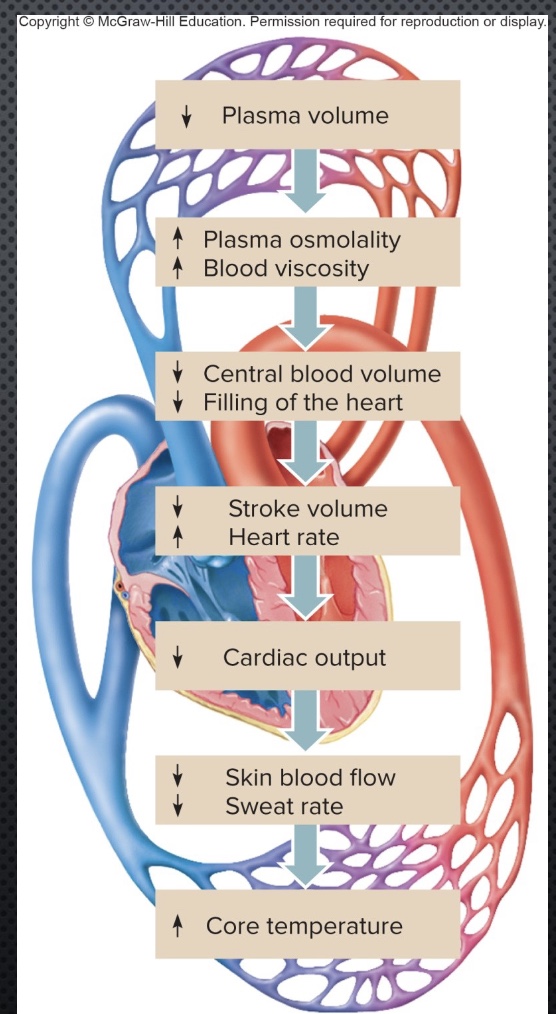
Heat injuries
-Heat cramps
-Heat exhaustion: more common and less challenging; put in shade, cool towel, water
-Heat Stroke: neurological deficits bc cook thermoregulatory center in brain (hypothalamus) (*ex: triathlete in video)
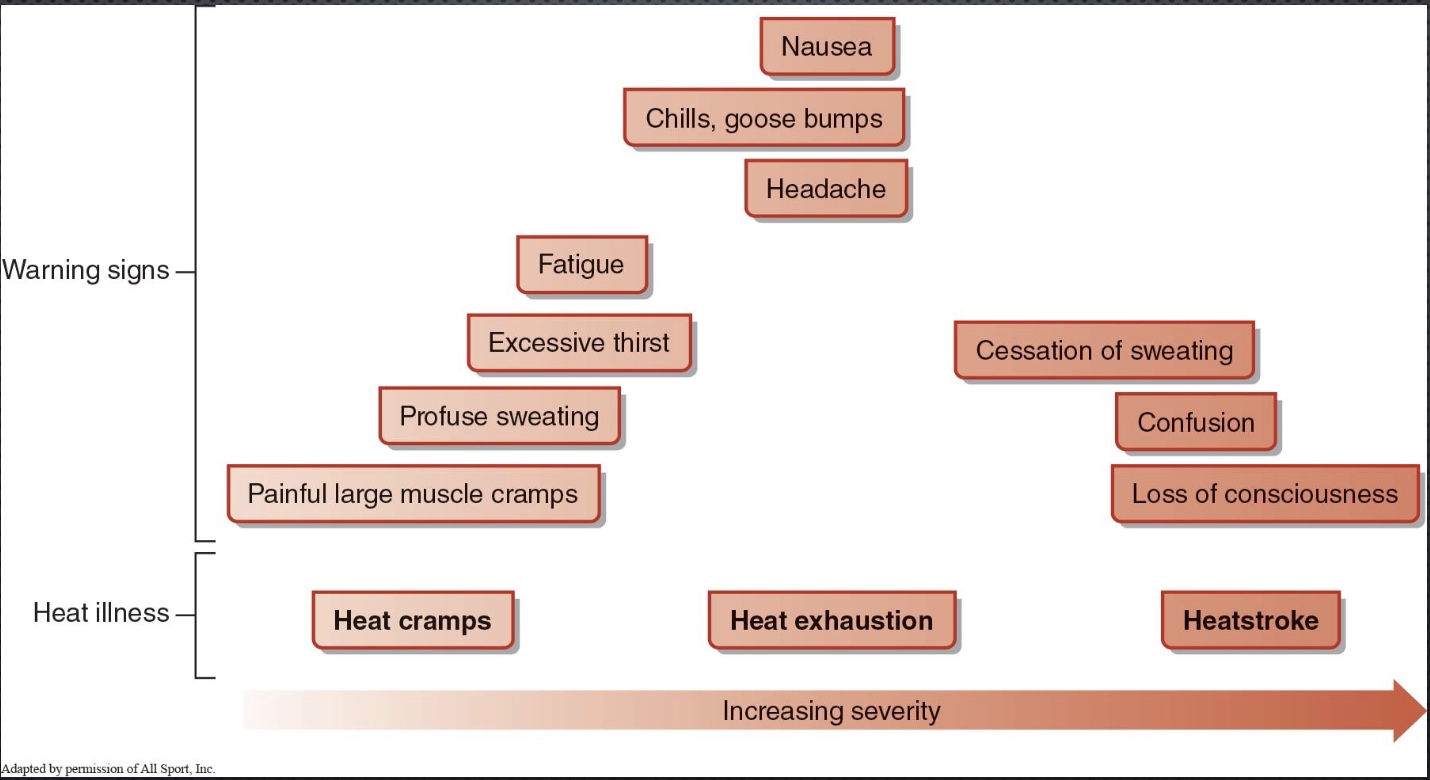
Fluid replacement
-Thirst mechanism not precise enough
people need to be more rigorous
-Weight loss a useful guide: drink 1.5 liters for each kg lost
drink 50% more than weight you lost
-Electrolytes improve hydration status (think I.V.)
-Including carbs (sports drink) benefits glycogen replacement
water by itself dilutes blood/lowers osmoalltiy
sport drink increases osmolality/don’t change so equilibrium; no kidneys so less water in urine
-Risk of overhydration and hyponatremia
*sign=light urine
•If excessive water is replacing (salty) sweat
*no blood Na+/blood so dilute blood goes in direction too excessively; brain cells swell and neurological problems
•Low sodium alters membrane potentials
•Hypotonic (diluted) blood causes fluid shift into cells
*pictures: limit to electrolytes
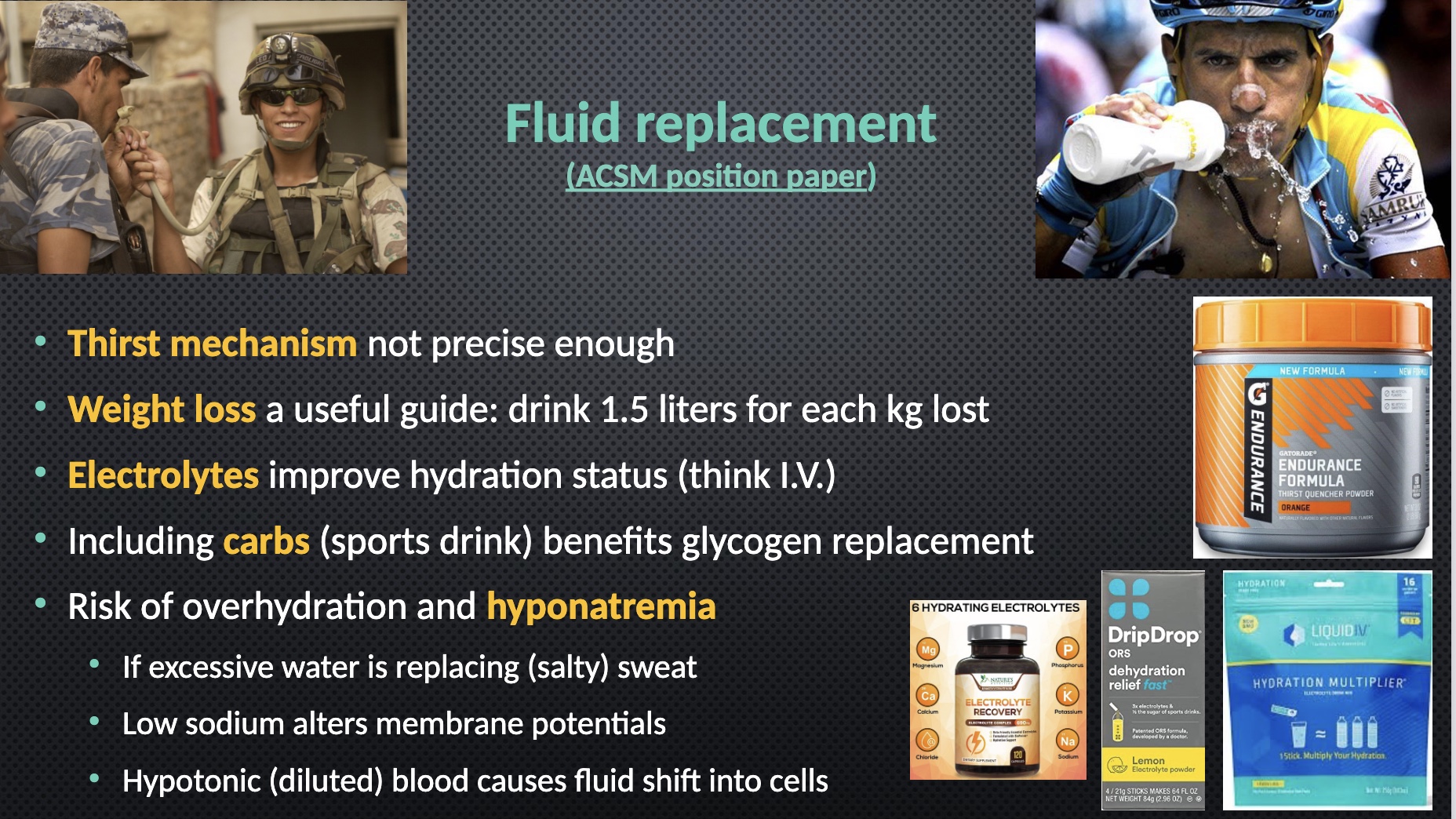
“salt stick”
-measured people’s sweat and gives customized product, matches up what lost/needed
-just marketing? but good theory to replace what lost from sweat
-more than just Na+ in sweat
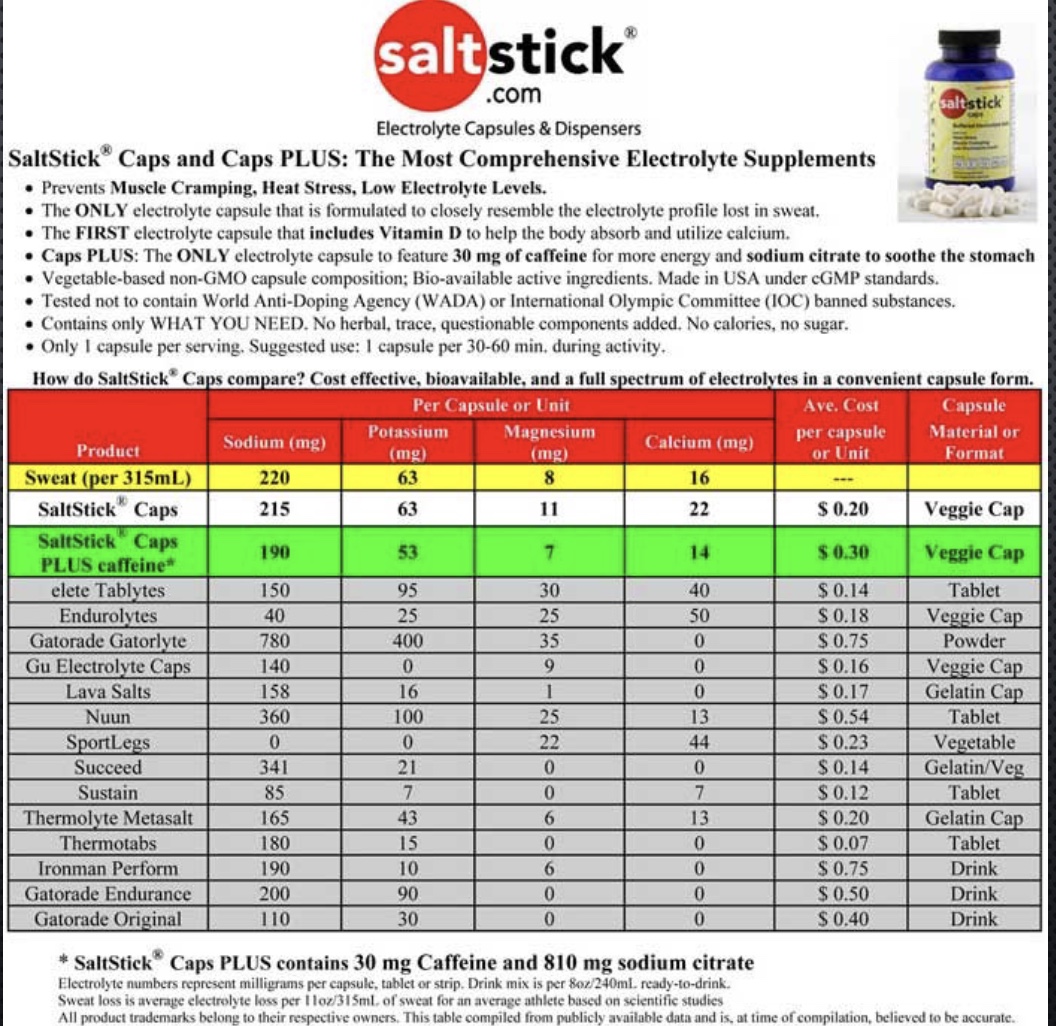
Hydration surrounding exercise in warm conditions (recommendations before, during, and after exercise)
-Before: show up euhydrates; ~tall glass water or 2 cups
-During: ~1 cup
-After: ~1 pint:1lb or 50% more than what lost
*ranges bc everyone not the same

24-hours hydration needs
-2L or 8 cups
-but depends largely on body size and daily sweat lost